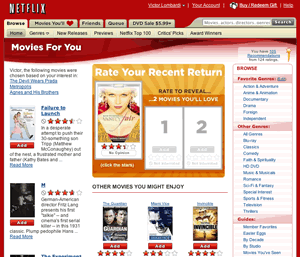The nice thing about having a blog is that you can pour your unfiltered frustration into it and walk away self-satisfied. Warning, this is one of those posts.
Dear New York City Internet Job Recruiters,
I’ve met several of you over the years, and many more lately now that the demand for talented people has outstripped the supply. For the most part, you are pretty nice people who are willing to go the extra mile to consider a good match of person and job and maybe even career, unlike the IT headhunters I knew in the early 90’s that were mostly middle men for resumes.
But, I have two giant gripes with the way you’re working these days:
1. Don’t ask me to do your job for you. Yes, I know a lot of people, and yes I like helping them find new opportunities. But simply telling me about an open request you have tells me that you haven’t taken the time to build your network or don’t know how. Further, you’re being paid to do that, so if you want expert help you need to share a significant portion of your fee.
2. Great people are not found, they’re grown. There are simply not enough skilled workers to fill your jobs these days. This may be great news for you, but ultimately the companies you work for (and the clients they work for) will continue to suffer until you learn to cultivate good people. It’s easy to measure if a company knows how to do this, just look at the rate of employee turnover. If it’s under 5%, they do it well. If it’s over 10%, there are serious problems.
To illustrate the potential, I’ll tell you a story from the first dot com boom. I was working at a company that hired a certain smart guy as a receptionist. In between phone calls and signing for packages he taught himself javascript. Excellent, make him a developer. After a while doing that he wanted to be an information architect, so I trained him. At that point the company failed to keep engaging him, and he left to pursue a masters degree, where he formed a company with a classmate. Soon after his company was bought by Google.
That’s an extreme example, but I can tell plenty more about people hired that were not qualified, but had the right qualities, were smart, and got things done. A little training and encouragement made them qualified. But until your clients realize this and stop turning away good people, I’m done helping you.
 Hip hop culture (at least here in America) has influenced not only our musical preferences but also our language, clothing, movies, and car styling. But you won’t see much of it online. The websites for hip hop artists resemble those for other artists, and the more innovative things are mostly done by us geeky white kids.
Hip hop culture (at least here in America) has influenced not only our musical preferences but also our language, clothing, movies, and car styling. But you won’t see much of it online. The websites for hip hop artists resemble those for other artists, and the more innovative things are mostly done by us geeky white kids.  One company I’m reverse engineering is Netflix. The store-less video subscription service
One company I’m reverse engineering is Netflix. The store-less video subscription service